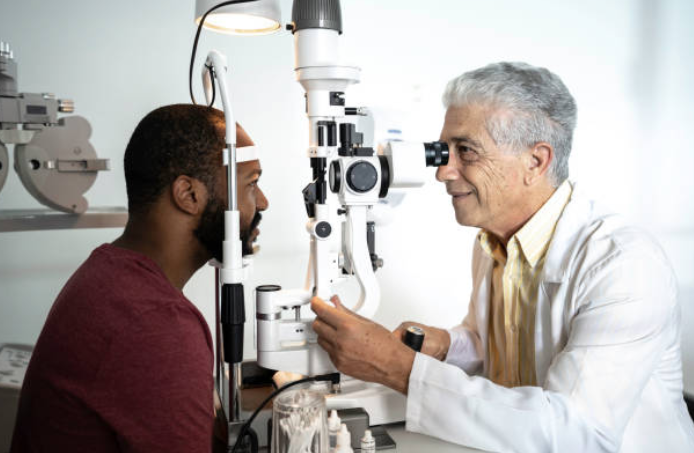(ThyBlackMan.com) Is your vision blurred or cloudy? Do you find it difficult to see in dim or bright light, with very bright light uncomfortable to look at? Do you see circles of light around bright lights such as streetlights and car headlights? If so, you might have developed cataracts in one or both of your eyes. The word might sound scary and bring to mind visions of sight loss; however, cataracts are mainly painless and can be easily treated. To inform yourself of this condition, read on to discover a guide to cataracts.
What are cataracts?
Cataracts are the development of cloudy patches on the eye’s lens, which prevents light from reaching the back of the eye and causing blurred and cloudy vision. It is a slowly developing condition, and you may not know that you are developing a cataract until you experience severe difficulties with your vision, affecting your ability to carry out regular tasks such as driving and reading. This is why regular eye tests are a must – your optometrist will be able to diagnose you with cataracts at an early stage and recommend the best treatment for you each step of the way.

How can cataracts be treated?
If your cataracts are in the early stage of development, the symptoms can be alleviated with the use of brighter lights and stronger glasses. However, most cataracts get worse over time, and when your cataracts have ‘ripened,’ they are ready to be surgically removed. It’s important to look into how to know you need cataract surgery, before opting for it, otherwise you could be jumping the gun without properly taking the time to do your research when speaking to professionals. Cataracts removal surgery involves removing the clouded optical lens and replacing it with a clear, synthetic lens with your correct prescription. This is a very common and safe procedure usually carried out under local anesthetic. Visit panoptix.myalcon.com for more information about cataracts removal surgery and replacement lenses.
What are the causes of cataracts?
Cataracts are a hugely common condition: they are the main cause of vision impairment worldwide. Age is a huge factor in developing cataracts, with most people experiencing the condition being aged 65 and over. In fact, as it is a natural part of the aging process, everyone will experience a cataract should they live to be 80 or 90 or older.
There are, however, certain other factors that increase your risk of developing cataracts. For instance: leading an unhealthy lifestyle involving smoking, excessive alcohol use, and a vitamin-deficient diet; lifelong exposure to UV light; long term use of steroid medication; a family history of cataracts; and certain health conditions such as diabetes.
How do I know if I have cataracts?
As cataracts are slow to develop, you may not realize you have them at first; regular eye tests will enable you to spot the condition early and track its progress. Cataracts are not painful and do not initially cause visible eye irritation, though, in their later stages, a film may appear over the eye. Symptoms include cloudy or misty vision, colors appearing faded with a yellow or brown tinge, and double vision. Get yourself checked by an optometrist as soon as possible if you suspect you have cataracts.
Staff Writer; Calvin Jacobs
















Leave a Reply